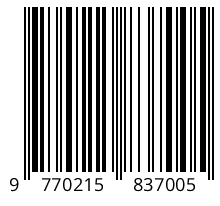FROM PRINT TO SCREEN: METHODOLOGY, MEDIA, AND TRANSITION OF QUR’ANIC LEARNING IN INDONESIA
DOI:
https://doi.org/10.18592/khazanah.v17i2.3211Keywords:
Method of Qur’anic Learning, Media, the Qur’anCallAbstract
This article aims to discuss the shift in the methodology of Qur’anic learning in Indonesia that is influenced by media. There are four cases used to map the contestations in the traditional era: Baghdadi, Qiroati, Iqro ', and Yanbu'a. Those have the same characteristic, namely face-to-face learning which is then challenged by the new media that infiltrate the Islamic world. One of the new media described in this paper is the Qur’anCall that is initiated by the PPPA Daarul Qur’an led by the famous preacher Yusuf Mansur. This is a learning and teaching platform for the Qur'an based on a video call. The character possessed by the Qur’anCall is very different from the traditional methodology. Based on this issue, the author examines the changes in Qur’anic learning in the traditional and modern eras then elaborates the effects that have caused. The finding shows that there are degradations from various performative aspects which are inherent in the traditional methods of Qur’anic learning. Furthermore, the authority of the Qur’anic teacher who was once held by the Qur'anic experts can be in the hands of people with low qualifications.References
Albab, Ulil. Bimbingan Cara Mengajar Yanbu’a. Kudus: Pondok Tahfidz Yanbu’ul Qur’an, 2004.
Ally, Mohamed. “Foundation of Educational Theory for Online Learning.” In The Theory and Practice of Online Learning. Edmonton: AU Press, 2008.
Atabik, Ahmad. “The Living Qur’an: Potret Budaya Tahfiz Al-Qur’an Di Nusantara.” Jurnal Penelitian 8, no. 1 (2014).
Bizawie, Zainul Milal. “Sanad and Ulama Network of the Quranic Studies in Nusantara.” Heritage of Nusantara 4, no. 1 (2015).
Bunt, Gary R. Islam in the Digital Age: E-Jihad, Online Fatwas, and Cyber Islamic Environments. London: Pluto Press, 2012.
Gade, Anna M. Perfection Makes Practice: Learning, Emotion, and The Recited Qur’an in Indonesia. USA: University of Hawai’i Press, 2004.
Hanum, Siti Farida. Efektivitas Penerapan Metode Qiraati Terhadap Keterampilan Membaca Huruf Al-Qur’an Di Play Group Plus Al-Afkar Waru Sidoarjo. Surabaya: UIN Sunan Ampel, 2019.
Hidayat, Mansur. “Sedekah Online Yusuf Mansur: Otoritas Dan Bahasa Agama Di Media Sosial.” Fikrah 6, no. 1 (2018).
Humam, As’ad. Cara Cepat Membaca Al-Qur’an. Yogyakarta: Team Tadarus AMM, 2000.
Kham, Muhammad Khuram, and Yassir M. Alginahi. “The Holy Quran Digitiation: Chalenge and Concerns.” Life Science Journal 20, no. 2 (2012).
Kinberg, Leah. “Contemporary Ethical Issues.” In The Blackwell Companion to the Qur’an. Victoria: Blackwell Publishing, 2006.
Maskhuri, M. Sedekah Dan Gerakan Dakwah Islam: Studi Pemikiran Yusuf Mansur. Semarang: IAIN Walisongo, 2011.
Mujab, Saiful, and Ida Vera Sophya. “Metode Baca Al-Qur’an.” Elementary 2, no. 2 (2014).
Nusantara, Yayasan Daarul Qur’an. Profil Lembaga PPPA Daarul Qur’an. Tangerang: Daarul Qur’an, tt.
Rahmayani, Tati. “Pergeseran Otoritas Agama Dalam Pembelajaran Al-Qur’an.” Maghza 2, no. 2 (2018).
Sisler, V. “The Internet and the Conrtuction of Islamic Knowledge in Europe.” Masaryk University Journal of Law and Technology 2, no. 2 (2007).
Stewart, Emily R. E-Scripture: The Impact of Technology in the Reading of Sacred Texts. Pittsburgh: University of Pittsburgh, 2013.
Ware III, Rudolf T. The Walking Qur’an: Islamic Education, Embodied Knowlwdge, and History in West Africa. Chapel Hill: The University of North Carolina Press, 2014.
Downloads
Published
How to Cite
Issue
Section
License
Authors who publish with this journal agree to the following terms:
- Authors retain copyright and grant the journal right of first publication with the work simultaneously licensed under a Creative Commons Attribution License that allows others to share the work with an acknowledgement of the work's authorship and initial publication in this journal.
- Authors are able to enter into separate, additional contractual arrangements for the non-exclusive distribution of the journal's published version of the work (e.g., post it to an institutional repository or publish it in a book), with an acknowledgement of its initial publication in this journal.
- Authors are permitted and encouraged to post their work online (e.g., in institutional repositories or on their website) prior to and during the submission process, as it can lead to productive exchanges, as well as earlier and greater citation of published work.

























